About York House
In this section: The layout | The principal rooms | The history of the house | York House Gardens
York House location on Google Maps
York House is in Richmond Road, Twickenham, TW1 3AA.
The house is Grade II listed and is scheduled as an ancient monument, dating back to the 17th Century. This diagram from Dr T H R Cashmore's book, "York House, Twickenham", shows the main rooms as they were in 1898:
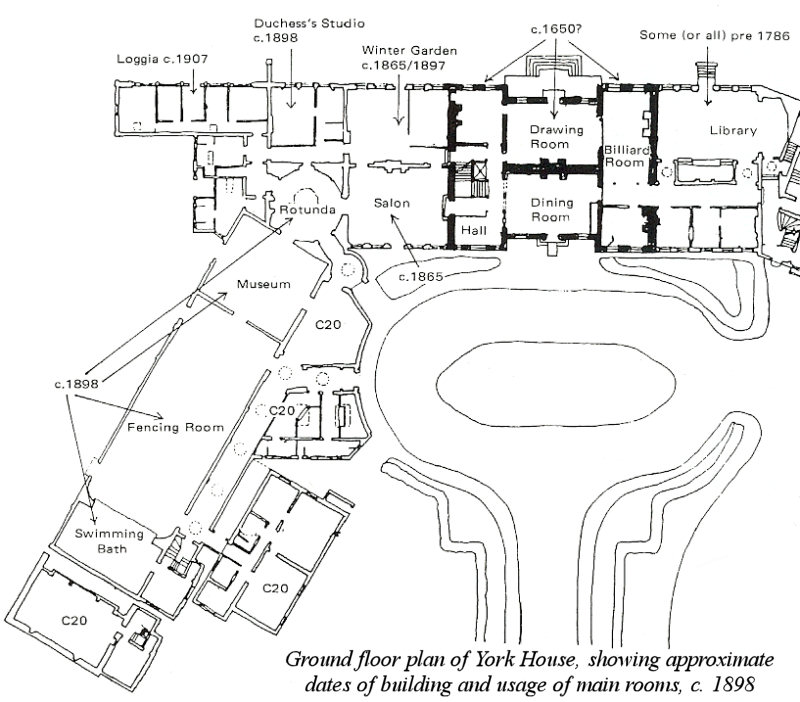
The Principal Rooms as they are today:
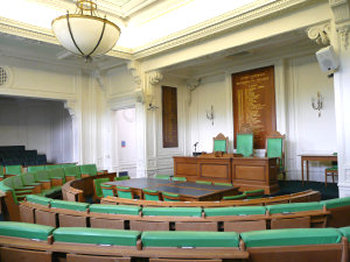
The Council Chamber |
|
The Council Chamber is a grand room facing the sunken garden. The plan above refers to it as the library, though the photo in the Tata family album shows it as a very elegant dining room.
It's now primarily used for formal committee meetings and meetings of the full council.
Architectural features of particular note are the ceiling and cornice.
(Many photos from the Tata album showing the rooms as they were around 1900 and as they are now hang in the corridor outside the council chamber. They're well worth a look.)
|
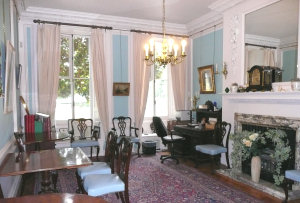
The Mayor's Parlour |
|
The Mayor's Parlour was formerly part of the billiard room. Architectural features of particular note are the cornice and the fireplace. Like many of the rooms in York House, it's hung with paintings from the Borough's art collection.
As a working office, this room is only open during the tours in the Twickenham Festival in June and the Open House day in September.
|
 |
The Entrance Hall, formerly the dining room, represents one of the least changed areas of the house. Architectural features of particular note are the fireplace - which may (or may not) have been by Grinling Gibbons - the ceiling and cornice.
There used to be a projecting entrance porch outside the small office, which was then the entrance hall, but this was removed around 1900 when the main entrance to the building was moved to its current position, in the centre of the facade.
|

The Stairway |
|
The handsome Staircase to the first floor is an architectural feature to note. Built of oak, it may have been part of the original 16th century farmhouse.
It
has been unfortunately adapted to accommodate the present lift (to the right of the picture).
A feasibility study has been undertaken to investigate the options for improving accessibility including relocating the lift to a less obtrusive position.
|
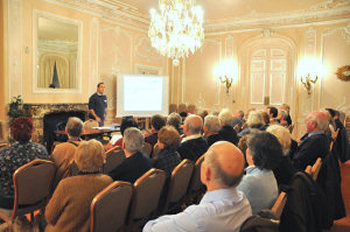
The Salon |
|
The Salon is richly decorated with some very interesting plaster work.
It's used primarily for meetings, and it's available for hire for private functions.
It's one of the two rooms (the other is the Terrace Room) that is licensed for marriage and civil partnership ceremonies.
|
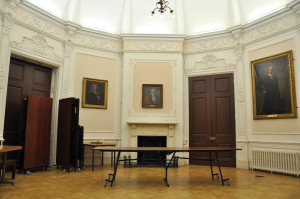
The Rotunda |
|
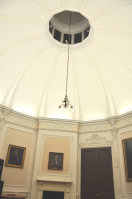
The lantern |
The Rotunda has a delightful lantern in the ceiling. It is often used alongside the Salon or Hyde Room, for small receptions.
|
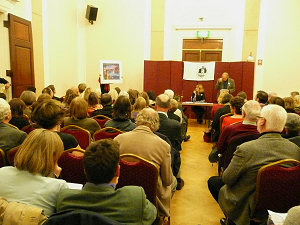
The Hyde Room |
|
The Hyde Room was once part of a Great Museum.
Now it's
primarily used for meetings, and it's available for hire for private functions.
|
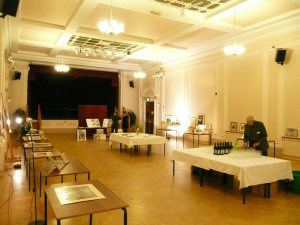
Clarendon Hall |
|
The Clarendon Hall was once part of the museum and was used as a fencing room.
The old marble swimming bath lies beneath the current stage.
Now, the room is primarily used for public meetings as well as being available for hire for private functions.
In 2004 the oak floor was replaced due to wear and tear, but is to the original design.
|
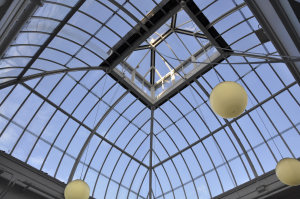
Ceiling of the former Winter Garden |
|
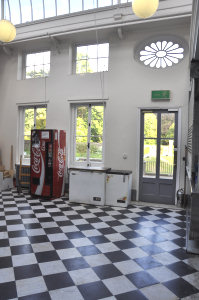
| The former Winter Garden has most recently been used as a canteen. It retains the original black and white marble flooring and the lovely domed glazed roof. The roof was restored in 2004, having been concealed internally by a false ceiling, thought to have been installed for safety reasons prior to or during the Second World War. |
|
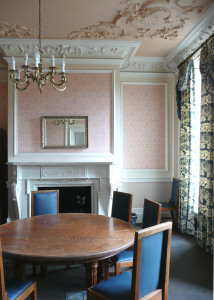
The Terrace Parlour |
|
The Terrace Parlour is used for small meetings, and as an annex to the Terrace Room.
Architectural features of note are the fireplace, ceiling and cornice.
|
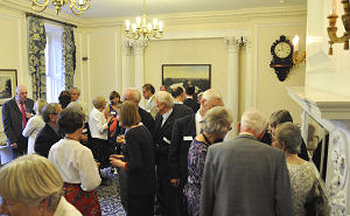
The Terrace Room |
|
The Terrace Room, formerly the drawing room, is primarily used for meetings and private functions.
The room leads out onto the terrace and the sunken garden. It is licensed for marriage and civil partnership ceremonies.
Architectural features of note are the fireplace and cornice.
|
See also: York House Virtual Tours – on the Council's website
Includes virtual tours of the Mayor's Parlour, the Members' Room, Room Seven, the Salon, the Terrace Room, York House Gardens, York House lawn, York House Gardens Riverside, and York House Garden Statues.
|














